Creating Resources to Improve Teacher Certification Exam Pass Rates
When we started this journey to create certification test preparation resources for aspiring teachers, we did so with the input and knowledge of experienced teachers and teacher educators. Our goal was to go beyond basic study guides and free practice tests. We aimed to create something meaningful for educators as they prepare for licensing exams. Ultimately, our goal was to improve teacher certification exam pass rates.
Why Improving Teacher Certification Exam Pass Rates Matters
What do we mean by meaningful? Our aim was to provide resources explicitly aligned with the test standards and content. Additionally, we sought to offer an engaging experience in an asynchronous setting. We want to go beyond answering the question, ‘what is on the teacher certification test?’ and instead explore ‘why does the content covered on the test matter in the classroom?’ This goal of creating meaningful, engaging material led to a common infrastructure for all Passage Preparation™ courses, which now support nearly 300 licensure courses across over 45 states.
Demonstrating Course Effectiveness
It was crucial to demonstrate the effectiveness of our courses. To do so, we examined the impact of our materials on a cohort of candidates from iteach, a CAEP-accredited, Texas-approved educator preparation program.
Our initial case study focused on the effectiveness of Passage Preparation™ courses aligned with the Texas Educator Certification Examination Program (TExES™). We examined the EC-6 CORE and Special Education tests, and the results were very promising.
The Role of High-Stakes Testing in Teacher Certification Exam Pass Rates
Educator licensing exams provide a standardized measure of the knowledge and skills deemed necessary for new educators. However, these high-stakes exams are often seen as obstacles, discouraging some aspiring teachers. Failing these exams can significantly impact a person’s career path, leading to financial strain from retakes and delays in entering the workforce.
More concerning, low pass rates on teacher licensure exams may lead policymakers to eliminate these essential assessments due to teacher shortages. Instead of removing these validated measures, policymakers should focus on providing effective support to those required to take the exams.
The Need for Effective Preparation
Data shows a troubling trend: many aspiring teachers, especially those of color, struggle to pass certification exams on their first attempt. Systemic issues within education contribute to this disparity, leaving candidates unprepared. This emphasizes the need for robust preparation programs to improve teacher certification exam pass rates, particularly among underrepresented groups.
Passage Preparation: Bridging the Gap
Passage Preparation addresses this need by offering online courses meticulously aligned with state licensure exams, including the TExES™. These courses provide:
- Diagnostic assessments with immediate, personalized feedback to pinpoint areas for improvement.
- Content-rich modules aligned with exam content and standards, incorporating text, images, and videos to enhance learning.
- Formative assessments and end-of-module quizzes to reinforce knowledge and provide continuous feedback.
- Full-length practice tests that mirror the actual exam format, with detailed score reports for thorough self-assessment.
This approach equips candidates with the knowledge and skills needed not just to pass exams but also to excel in the classroom.
Case Study: Measuring the Impact
The case study reviewed the performance of more than 500 teacher candidates in Texas who used Passage Preparation for the TExES™ exams. The study measured two key metrics:
- Prepared Status: Candidates scoring 85% or higher on a Passage Preparation practice test were classified as “prepared.”
- Module Quiz Engagement: The number of quizzes completed indicated candidate engagement with the program’s materials.
Significant Findings: The Importance of Preparation
The study revealed compelling evidence of Passage Preparation’s effectiveness:
- Candidates who achieved “Prepared Status” on practice tests had significantly higher pass rates on the actual TExES™ exams across all subjects.
- 81.06% of candidates who achieved “Prepared Status” passed the core subjects portion of the TExES™, compared to just 58.40% of those who did not.
- Candidates who engaged more extensively with the module quizzes showed higher pass rates on the TExES™ exams.
As shown in Figure 1 below, candidates with ‘Prepared Status’ consistently outperformed those who were not prepared across multiple subject areas. The results demonstrate a clear correlation between engaging with Passage Preparation and success on the TExES™ EC-6 Core and Special Education exams.
Supporting the Teacher Pipeline
The findings of this case study have significant implications for supporting the teacher pipeline. By effectively preparing candidates for licensure exams, Passage Preparation can:
- Increase Certification Rates: Helping more aspiring educators navigate the certification process.
- Diversify the Teacher Workforce: Providing equitable access to preparation resources helps close the achievement gap and increases the representation of teachers of color.
Maintaining a Standard for the Profession
Teacher certification exams are essential to state licensing systems. However, these exams can be a significant barrier to entry for many aspiring teachers. As demonstrated by this case study, Passage Preparation offers a solution that maintains high entry standards while providing the support candidates need to meet them. By bridging the gap between teacher education and licensure requirements, Passage Preparation not only improves teacher certification exam pass rates but also helps build a more diverse, qualified, and prepared teaching workforce.
We are pleased to share these results and look forward to further studying the effectiveness of the resources we’ve created. If you are interested in partnering with us, please let us know.
Interested in downloading our case study to learn more? Click here to access the full report.










